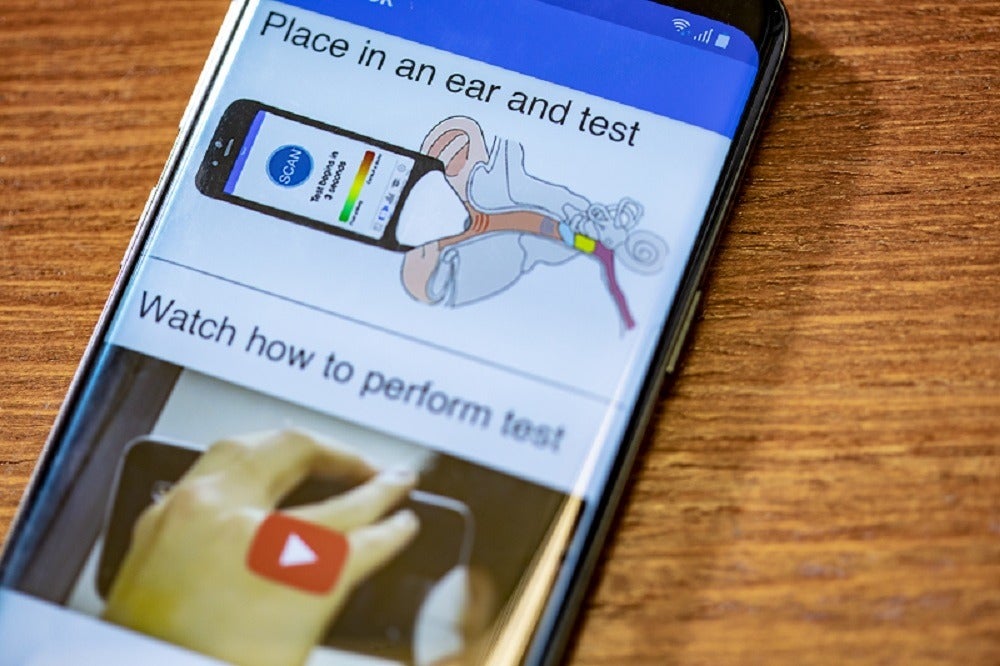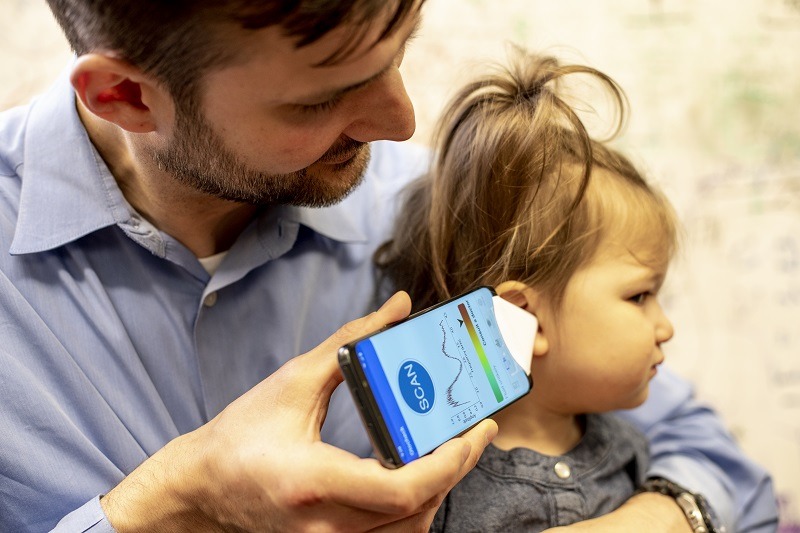
New software has been that will allow for an at home ear infection test- to identify fluid behind the eardrum using just a smartphone’s microphone, speaker and a piece of paper.
Designed by researchers from the University of Washington (UW), the app detects fluid behind the eardrum by “chirps” reflected back to the phone after it emits a series of soft, audible chirps, directed into the ear through paper that needs to be folded into a funnel.
Shyam Gollakota, an associate professor in the Allen School of Computer Science and Engineering at UW, said: “Designing an accurate screening tool on something as ubiquitous as a smartphone can be game-changing for parents as well as healthcare providers in resource limited regions.
“A key advantage of our technology is that it does not require any additional hardware other than a piece of paper and a software app running on the smartphone.”

How are ear infections diagnosed and treated?
This condition is also called “otitis media,” which occurs when fluid builds up in the middle ear behind the eardrum and is infected.
It is usually caused by bacteria and often begins after a child has a sore throat, cold or other upper respiratory infection.
NHS defines otitis media as an infection of the middle ear that causes inflammation (redness and swelling) and a build-up of fluid behind the eardrum.
Anyone can develop a middle ear infection but infants between six and 15 months old are most commonly affected.
The condition is the most common reason for parents to bring their children to a pediatrician, according to the National Institute of Health.
It’s estimated that around one in every four children experiences at least one middle ear infection by the time they’re ten years old.
Once diagnosed, ear infections can be easily treated with observation or antibiotics, and persistent fluid can be monitored or drained by a doctor to relieve symptoms of pain or hearing loss.
How the app can be used as an at home ear infection test using sound
The system, called EarHealth, is claimed to be the first smartphone applications available for iPhone and Android that can hear ear infections in children.
The results published yesterday in Science Translational Medicine explains how the system uses the smartphone speaker to play “audible, continuous wave chirps” into the patient’s ear canal.
While a normal eardrum resonates well at multiple sound frequencies, the sound reflected from a healthy ear will create a broad-spectrum, soft echo producing an “acoustic and broad dip” in the overall signal, which is displayed on the screen.
An infected ear with fluid or pus restricts the vibrational capacity of the eardrum resulting in a destructive interference, which creates a “narrower and deeper acoustic dip.”
“It’s like tapping a wine glass,” explained Justin Chan, a doctoral student in the Allen School.
He said: “Depending on how much liquid is in it, you get different sounds.
“Using machine learning on these sounds, we can detect the presence of liquid.”
The smartphone-based screening tools determines the presence of fluid with a detection probability of 85%.
After parents provided informed consent, the team tested 53 children between ages of 18 months and 17 years at Seattle Children’s Hospital, half of the patients were getting tubes in their ears replaced, while the others were getting their tonsils removed or another non-ear procedure.
Dr Sharat Raju, a surgical resident in head and neck surgery at the UW School of Medicine said: “What is really unique about this study is that we used the gold standard for diagnosing ear infections.
“When we put in ear tubes, we make an incision into the eardrum and drain any fluid present. That’s the best way to tell if there is fluid behind the eardrum.
“So these surgeries created the ideal setting for this study.”
Ideally, the EarHealth app could be used as an at-home diagnostic tool by parents worried that their child tugging at their ear could be something more serious, and this would avoid unnecessary trip to the doctor.
The researchers plan to commercialise this technology through a spinout company, Edus Health, after getting the app cleared as a medical device by the FDA later this year.






